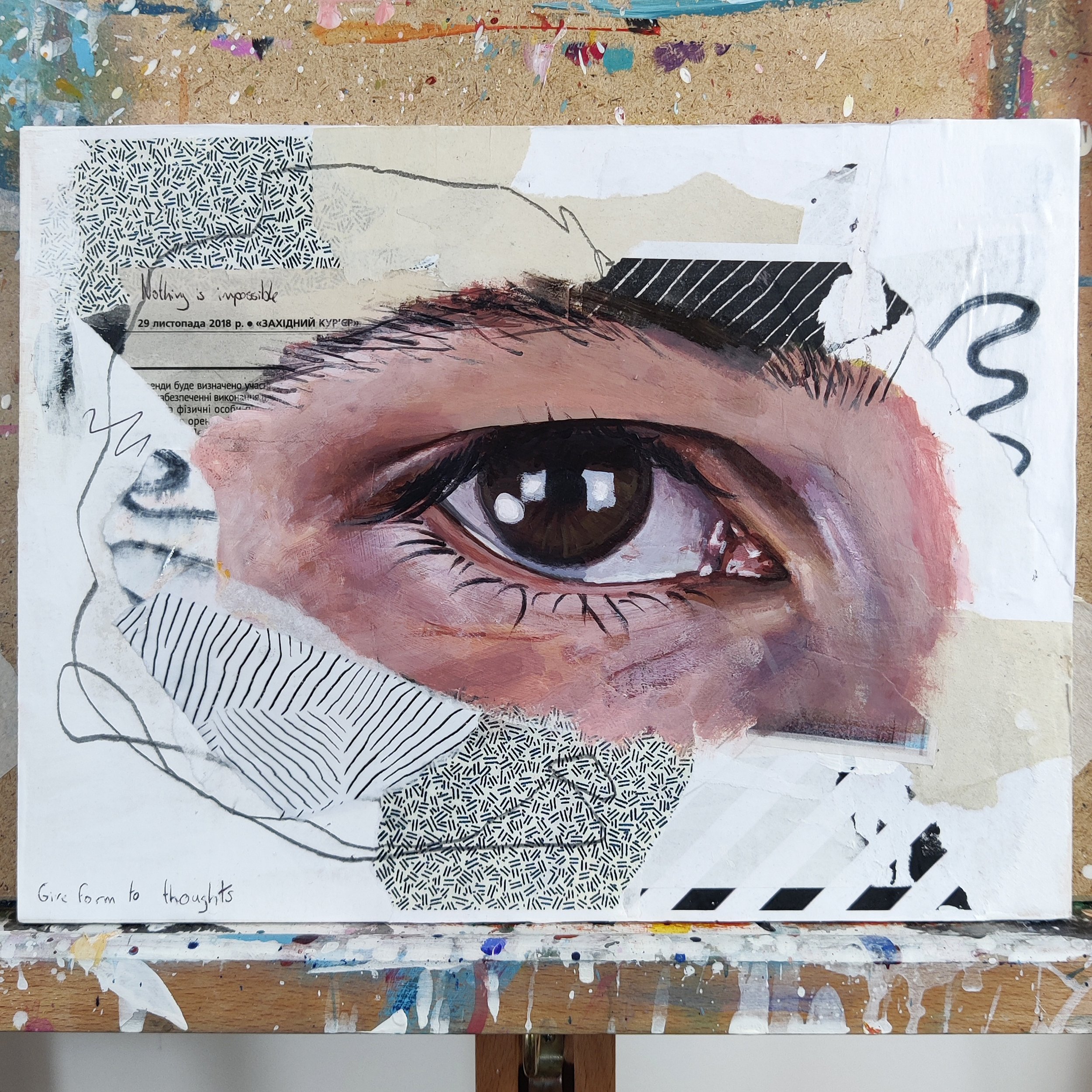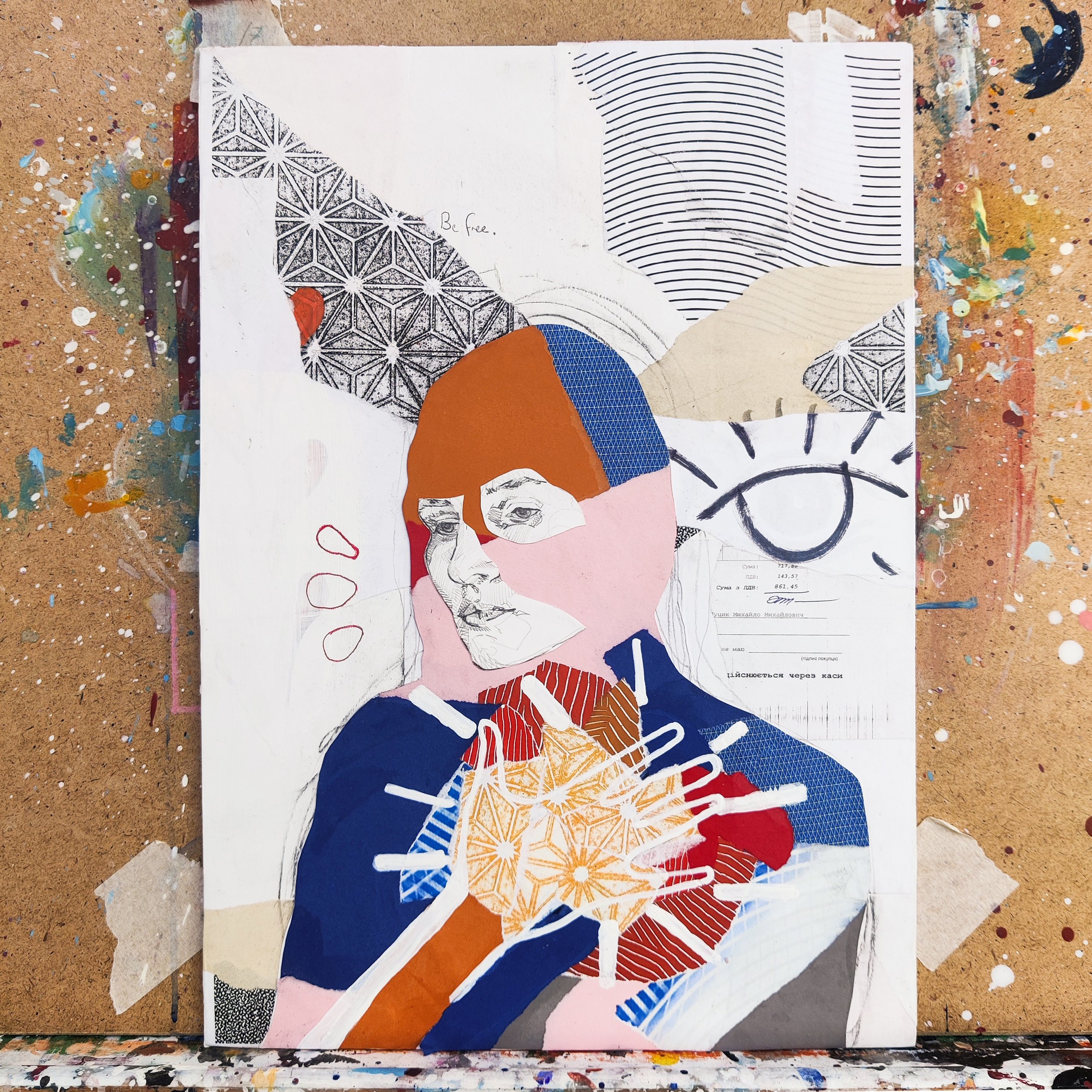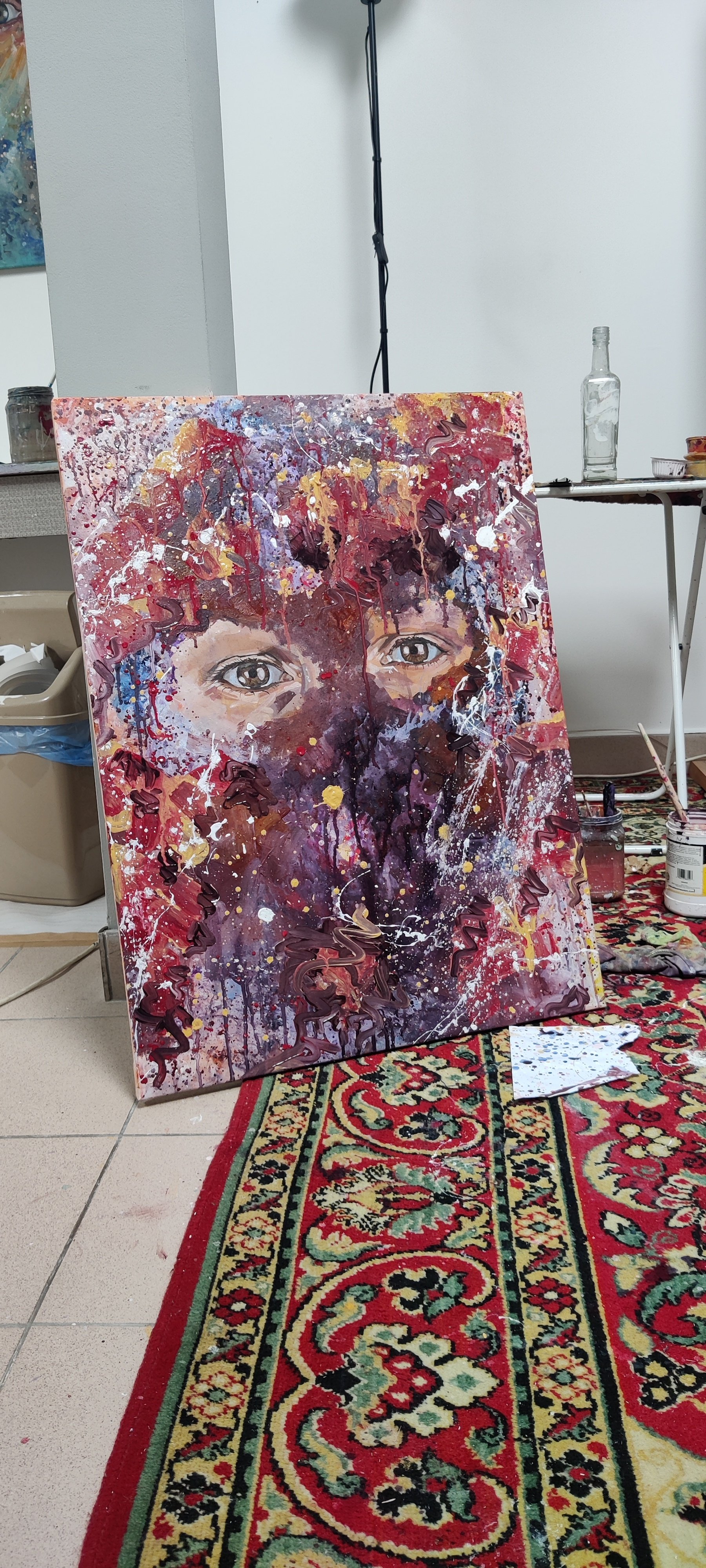ARTIST INTERVIEW: Mike Thebridge
Tell me about yourself and what inspired you to become an artist
I had a dream when I was younger, quite a mundane one as dreams go, where I saw my older self going about daily life and, although a lot of things were unclear, I knew I was an artist, and this gave me an overwhelming and complete sense of joy. So, this was the first sense that I wanted to pursue art over other things. I have a limited but eclectic working experience outside of being an artist and there were times when art was less a part of my life, and this led me to feeling incomplete and quite unhappy. For me there's no other option really.
What do you find interesting about painting/drawing the human face?
People are fascinating and wonderful, and provide endless inspiration. I've been focused on portraits for the last 3 years or so. My previous work was quite varied in terms of subject matter, but it was united by themes of self-exploration and trying to understand my mind and the nature of consciousness.
I started drawing people just before 2020 and lockdowns really drove me to pursue this more fully and learn to dive into portraiture. The technical challenges of drawing and painting faces captivated me, whilst at the same time I found people to be the perfect subject, to deeper explore my interests in human experience and the mystery of what other people are thinking and feeling.
Thinking about your most recent work, tell me about your process from start to finish. Where did you find your inspiration? How long did it take you to complete? What is the narrative behind the piece?
My process is quite experimental and always evolving. For me it’s always a cycle of creating and destroying an image, which builds an interesting tension in a piece. Whether it’s building layers of marks with paint, or cutting and pasting and layering with collage, you can work to create or destroy the image you’re representing.
The most recent piece, ‘Inner Light’ is a collage and represents how we’re all made up of fragments of moments, memories, ideas, and emotions. I usually start with photos, finding a pose and expression, then I’ll make some drawings from here and start scaling up.
It’s about reading emotion and how much information we need to recognise feeling in others, hence the fragmented face and abstracted figure.
Inside the studio
How do you use colour in your work to create a mood? What is the importance of using colour in your art?
My work has always been colourful, and it's partly inspired by psychedelic experience. I’m always wanting to add more colour, so I find it hard to hold back and limit myself with colour selections.
I think that life isn’t monochromatic, it’s not just one thing, even the most intense experiences are tinged with a pinch of something else. Most of the time we’ve got lots of different things going on that we have to balance to reach harmony, and that’s like colour in a painting.
How has art helped you in your personal life? Do you find that art is a way for you to express your feelings/emotions?
It's definitely given me purpose and a focus. I'm always striving to improve what I'm creating and learn more about painting and hone my skills.
Yes, it helps me express my feelings and emotions. Painting helps me explore, understand and know them. I used to struggle with understanding and articulating my emotions and recognising my feelings; I'd often feel overwhelmed and paralysed by what was going on in my head.
After leaving Art school I worked as a call handler for the ambulance service, I’d speak to people in their darkest moments, and would hear some tragic things. The worst calls would stick in my head, and I didn’t know how to process these traumatic events, until I discovered mindfulness and meditation. This practice helped me understand how my mind works and gave me tools to lift myself out of a dark spiral of thinking. My paintings reflect this journey and are a reminder to stay present, that nothing is permanent and that we have so much to love about being alive, and that is why I create the art I make today.
What are the key messages you would like viewers to take away from your artwork?
That the practice of examining the nature of consciousness is a vital part of finding happiness. We only engage with the world through the lens of our own experience and so exploration of that lens is essential. The world shapes our mind and we shape the world, these are interconnected. Also, that it’s wonderful to be alive and live in this complex and fascinating universe, we should celebrate life!
Who is your favourite artist? If they were sat next to you right now, what would you ask them? Do they have an influence on your work?
This is so hard to pick a single artist. I’m always encountering artists, contemporary and historical, who are influencing me in little ways. They each give me ideas of techniques to try, or a combination of colours, a texture to try and recreate. This is the fabulous thing about Instagram and social media - being able to discover and speak with artists around the world, it demystifies the creative process which helps us all develop as artists.
Giacometti’s paintings and sculptures have always captivated me, they have a unique energy and way of depicting figures in space. More than ask questions I’d love to observe him working, there are limited archival clips, but it’s not enough!
Why do you think art is important in society?
We are all united by stories and art is storytelling. It is innately human. It's simultaneously a reflection of the world and an expression of how we want it to be. It is the glue that holds society together by sparking conversation and connection.








